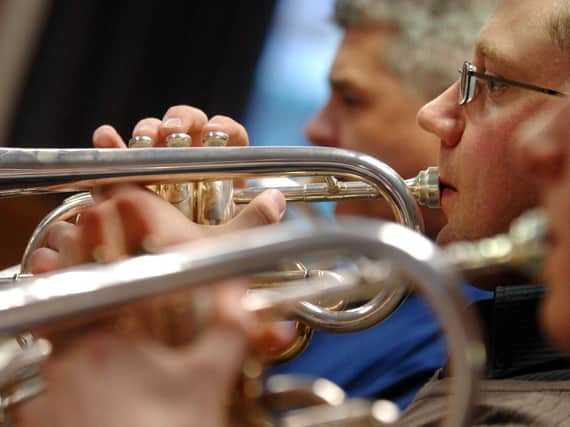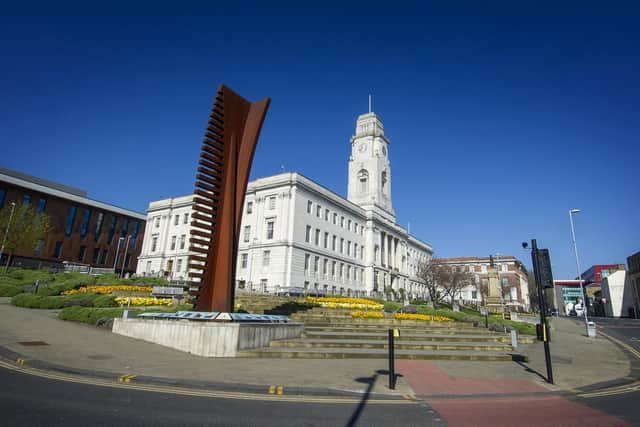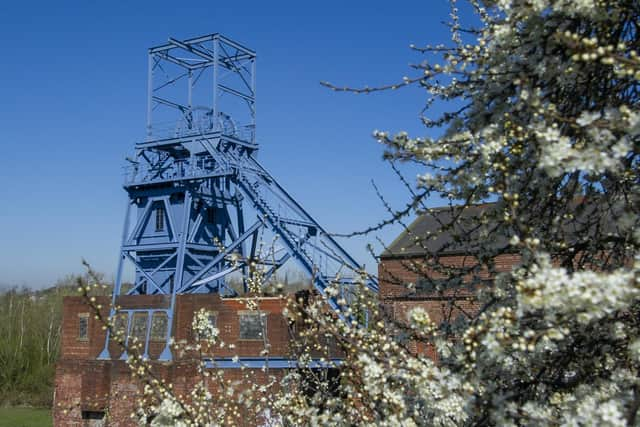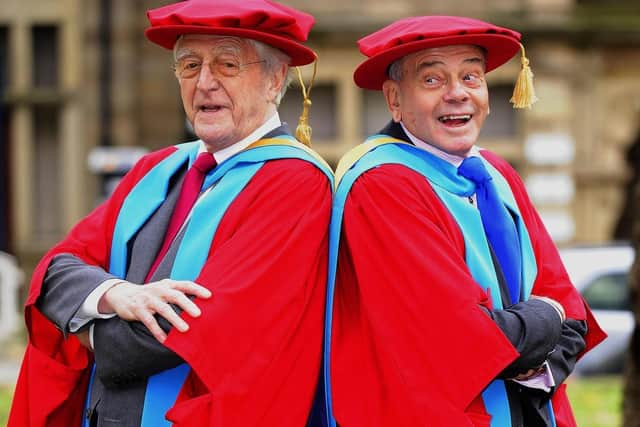Barnsley, the bold as brass town where Sir Michael Parkinson was born and the Arctic Monkeys studied


Few towns in Yorkshire can claim to have quite as many smaller communities within their boundaries, but Barnsley has about three dozen or so.
Alphabetically, they start with Ardsley and end with Wombwell, and in between there are (among others) Kexborough, Kingstone, Lundwood and Mapplewell. Another of them, Worsbrough, has four of its own – Village, Common, Dale and Ward Green.
Advertisement
Hide AdAdvertisement
Hide AdBarnsley (with a population of nearly 100,000 people) is a town of intriguing contradictions, starting with the fact that it isn’t quite sure of where its own name came from.


Whoever is right, when the Norman scribes turned up, they found around 200 souls in the village – a figure that didn’t rise greatly for the next few hundred years.
By the mid-16th century, the town had a Chapel of Ease created by the monks of Pontefract Priory, a Royal Charter for a weekly market on a Wednesday, an annual four-day fair at Michaelmas and three other annual fairs throughout each year.
As the years rolled by and travel started to increase, the centre of the town started to prosper. It became a major centre for linen-weaving in the 18th and 19th centuries, and then heavier industries and manufacturing came along – as well as the opening of many local collieries.


Advertisement
Hide AdAdvertisement
Hide AdOne was at Elsecar, and it was owned (as were many others) by the Fitzwilliam family, who grew prodigiously wealthy on their mining interests.
Historian Peter Brown, who is writing a book on the magnificent Fitzwilliam home at nearby Wentworth Woodhouse, says they were benevolent landlords and good employers.
“Elsecar – now a much-loved Heritage Centre – had mines, an ironworks, forges and engineering workshops. It had a canal to transport goods and later a branch line taking coal to the main railway. It also had, at one point, an overseer who convinced the earl that fresh air would improve the lives of his workers. A revolutionary thought for those times.”
The family certainly left their mark. “It is difficult to go a short distance in Barnsley today without finding streets or lanes named after the family. The Fitzwilliams understood the value of people and they supported ‘their’ families.”


Advertisement
Hide AdAdvertisement
Hide AdAnd they were great innovators, too. “Elsecar is the home of the only Newcomen pumping engine in the world still in its original location. The 4th Earl had it installed in 1795 to pump out water from the New Colliery. At its peak, it could draw an amazing 600 gallons a minute. Even today, that is astonishing.”
Railways pushed their way into Barnsley’s story during the time of the great “Railwaymania”, where dozens of companies created new tracks all over Britain, each in competition and vying for custom and freight trade.
You won’t be surprised to learn that places like Leeds, York and Sheffield had more than their fair share of lines snaking into each of them, though Barnsley almost outdid them all.
The North Midland Railway arrived in 1840, and established what was first called Cudworth station – nearly three miles outside the town centre. Ten years later the Manchester and Leeds Railway opened up Barnsley Exchange, in the town itself. And 20 years after that the Midland Railway popped up with Regent Street station, which was a little more than a wooden shed.
Advertisement
Hide AdAdvertisement
Hide AdWhen something more permanent went up, it used part of the old municipal court house building, so in 1873 it was re-named Barnsley Court House Station.
Any Victorian buying a ticket to get to Barnsley by rail was spoiled for choice, and probably confused. Today, there’s a modern and smart interchange, with the rail line right next to the bus service area.
And that, in turn, is adjacent to the sparklingly new markets area, and the Alhambra Shopping Centre. This clever consolidation – with the name The Glassworks – all stems from Barnsley Council and business partners coming up with an ambitious consultation plan in 2002, called “Re-thinking Barnsley” – a long-term regeneration programme for the town centre.
Maybe someone involved in this successful scheme remembered what Earl Fitzwilliam did at Elsecar – having everything easily accessible in one location. Now (as then) it all makes perfect sense.
Advertisement
Hide AdAdvertisement
Hide AdPerhaps the town’s most impressive building is the imposing and beautiful Art Deco-style town hall, which was designed by Arnold Thornley, who was also responsible for Stormont, in Belfast. It was opened by Edward, Prince of Wales (later Edward VIII and the Duke of Windsor) in 1933.
He might have been aware of a plaque across the road, dedicated to his grandmother, Victoria – before she became Queen. It is to commemorate the young Princess (and her redoubtable mother, the Duchess of Kent) staying in the town while on a royal journey.
The town hall is a remarkable building though it was later heavily criticised by George Orwell in his book, The Road to Wigan Pier. Orwell, too, had stayed in the town, researching his publication, but unlike the princess a century earlier, he lodged with working class miners and their families, none of whom had anything good to say about the hall, which cost a whopping (in those days) £188,037 to build.
Orwell said, quite plainly, that the money should have been spent on improving the social and housing conditions.
Advertisement
Hide AdAdvertisement
Hide AdThe building today houses arguably one of Yorkshire’s best museums, Experience Barnsley, which is dedicated to the story of the town, past and present. It’s an impressive collection of galleries, largely built up from objects, archives (and stories) donated or loaned by local residents.
It is admirably curated and is always a fascinating place to visit. Some of the earliest archives date back to the 12th century, but there are always contemporary references in its changing exhibitions.
On a ridge that overlooks the road to Sheffield and Elsecar is the magnificent Wentworth Castle – which isn’t a castle at all, although there is a mock ‘folly’ of some picturesque ruins of one in the stunning gardens, now managed by the National Trust. These are the only Grade I listed parklands in South Yorkshire.
This, for many generations, was home to the families of the Earls of Strafford, until the last of the owners, Bruce Vernon Wentworth, sold the house and gardens to Barnsley Corporation in 1948.
Advertisement
Hide AdAdvertisement
Hide AdBarnsley is a curious and wonderful juxtaposition of facts and figures, people and events. The first glass recycling bottle bank was opened here in 1977. Members of the Arctic Monkeys studied music at Barnsley College and Penistone-born Kate Rusby is one of the UK’s finest folk singer-songwriters.
The town has also produced the likes of Sir Michael Parkinson, Joanne Harris and Tommy Taylor, one of the ‘Busby babes’ who died in the Munich air disaster. Then there’s the Grimethorpe Colliery Band that featured in the box office hit film Brassed Off.
The town is home to a statue of the legendary cricket umpire Dickie Bird (the handiwork of Graham Ibbeson, himself a Barnsley lad) and has its very own Bard – the splendid Ian McMillan.
The local accent is so impenetrable that those from nearby towns – like Rotherham and Doncaster – claim that to understand what is being said,they have to carry a Barnsley-English dictionary when they visit.
Advertisement
Hide AdAdvertisement
Hide AdKen Loach filmed his 1969 classic Kes here – it was based on the best-selling book A Kestrel for a Knave, by the Hoyland-born Barry Hines. The film has never been out of the British Film Institute’s Top Ten of UK films, and there are thousands of fans of the movie who can recite, verbatim, the lines spoken on the sports field by the much-missed actor Brian Glover, who played the teacher, Mr Sugden. It was the prelude to a glittering career for Glover.
And does it need to be said that Barnsley Bitter is one of the best beers brewed in all of Yorkshire? Raising a glass of that unique and flavoursome ale, we could all happily toast this remarkable town.
Editor’s note: first and foremost - and rarely have I written down these words with more sincerity - I hope this finds you well.
Almost certainly you are here because you value the quality and the integrity of the journalism produced by The Yorkshire Post’s journalists - almost all of which live alongside you in Yorkshire, spending the wages they earn with Yorkshire businesses - who last year took this title to the industry watchdog’s Most Trusted Newspaper in Britain accolade.
Advertisement
Hide AdAdvertisement
Hide AdAnd that is why I must make an urgent request of you: as advertising revenue declines, your support becomes evermore crucial to the maintenance of the journalistic standards expected of The Yorkshire Post. If you can, safely, please buy a paper or take up a subscription. We want to continue to make you proud of Yorkshire’s National Newspaper but we are going to need your help.
Postal subscription copies can be ordered by calling 0330 4030066 or by emailing [email protected]. Vouchers, to be exchanged at retail sales outlets - our newsagents need you, too - can be subscribed to by contacting subscriptions on 0330 1235950 or by visiting www.localsubsplus.co.uk where you should select The Yorkshire Post from the list of titles available.
If you want to help right now, download our tablet app from the App / Play Stores. Every contribution you make helps to provide this county with the best regional journalism in the country.
Sincerely. Thank you.
James Mitchinson
Editor